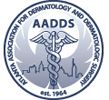
Many people are diagnosed daily with precancerous lesions of the skin. These lesions are called actinic keratosis, which are primarily caused by sun damage. The most common areas these legions are found is on the face, ears, forearms, and hands. They appear as small, scaly, rough red patches that do not heal. Actinic keratosis develops over years of sun exposure. The accumulation of exposure is what increases your risk of development, and they generally appear after the age of forty. The risk factors for developing actinic keratosis include: cumulative sun exposure, fair skin, blonde or red hair, tendency to freckle, or a weakened immune system.
It is important to treat actinic keratosis because they are considered the first step in development of skin cancer. Over time they have the potential to progress to squamous cell carcinoma. There are many treatment options that work well for clearance of actinic keratosis; liquid nitrogen, prescription creams, and a new option: Levulan photodynamic therapy or PDT.
Levulan photodynamic therapy is a two step process for treatment of actinic keratosis on the face, scalp, hands, and arms. There are two steps in treating with PDT, applying the solution and the light introduction. The first step is the application of Levulan solution to the affected site; this solution makes the actinic lesions more sensitive to light. Once the application is performed you will be asked to wait while the solution is absorbed into the skin, which is the incubation period. The incubation period is dependent on the body area treated, which usually ranges from one to two hours.
When the incubation period is over you will then receive a blue light treatment. Once safety glasses are in place the light is placed over the treatment sight and turned on. The light is bright blue in color and you will be under the light for sixteen minutes and forty seconds. Following the light you will have a sun screen placed on the skin and your treatment is complete.
- What are the benefits of Blu-Light?
- One major benefit is that the treatment is a series of two or three sessions in the doctor’s office. Therefore you do not need to mess with creams and greasy ointments that may take months to work. Also, photodynamic therapy with Blu-light is usually covered by medicare and most other insurance companies for the treatment of actinic keratosis.
- What can you expect while under the light?
- The light is of low intensity and will not heat the skin. However, during the treatment you might feel stinging, tingling, or slight burning sensation. These sensations normally last the length of the treatment and should be fully resolved within twenty-four hours. After treatment the skin can appear red and swollen, it may mimic a sunburn; this appearance is usually over within a few days. There have been no reports of scarring while using PDT.
Studies have shown that 94% of patients treated with Levulan PDT rated their response as good to excellent. The great news is the treatment is covered by Medicare and most other insurance companies.
Everyone is at risk of developing actinic keratosis, it is vital to have your skin examined to have these lesions diagnosed. Treatment of these lesions is important to prevent them from developing into squamous cell cancer. There are many great options for treatment, Dr. John Kayal, a skin cancer specialist, has the newest treatment options available for actinic keratosis with the Levulan PDT, call today to set up a consultation with Dr. Kayal.
Posted on behalf of
141 Lacy Street, Suite 200
Marietta, GA 30060
Phone: (770) 426-7177
FAX: (770) 426-7745
Email: kayaldermatology@gmail.com
Mon-Fri: 7:30 am – 5:00 pm







